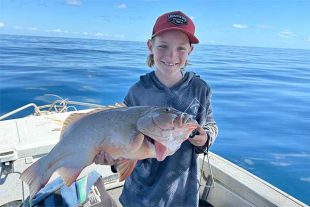WITH the prawning season kicking off in southeast Queensland, it is important to remember movement restrictions are in place in Moreton Bay.
To help protect Queensland’s beautiful natural waterways, fishers must not move raw prawns, yabbies and marine worms out of the white spot disease movement restriction area in southeast Queensland. The movement restrictions are in place from Caloundra to the NSW border and west to Ipswich and they also apply to uncooked, frozen crustaceans because freezing does not destroy the virus.
What is white spot disease?
White spot disease is caused by a virus that affects crustaceans such as prawns, crabs, lobsters and yabbies. The disease was first detected in prawn farms along the Logan River south of Brisbane in December 2016 and then subsequently in prawn and crab samples collected from the Logan River, Brisbane River, Moreton Bay and Deception Bay.
In some situations, white spot disease can cause mass mortalities in prawns. While white spot disease does not affect fish, it is not known what impacts the disease could have on the marine food chain and local fish stocks. Prawns infected with white spot disease do not pose a risk to people’s health and are completely safe.
What are the latest results from white spot disease testing?
The last round of testing for white spot disease was conducted in October 2017 and all samples returned negative results for the virus that causes white spot disease. This doesn’t necessarily mean white spot disease is gone, but it does indicate the disease may not be established in Moreton Bay.
To confirm white spot disease has been eradicated, Biosecurity Queensland will need negative test results consecutively for two years. The next round of testing is scheduled for March and April 2018.
What does white spot disease look like?
Prawns with white spot disease may have a loose shell with numerous white spots on the inside surface of the shell and a pink to red discolouration. However, please note infected prawns and yabbies may not display any symptoms and white spots may appear for a range of reasons including freezer burn and bacterial and fungal infections.
How do I report white spot disease?
If you find a prawn you think may have white spot disease, it is important you take a photo of the prawn showing the spots, keep the prawn chilled and contact Biosecurity Queensland on 13 25 23 or report it through the white spot disease reporting form online at daf.qld.gov.au/wsd
 Bush ‘n Beach Fishing Magazine Location reports & tips for fishing, boating, camping, kayaking, 4WDing in Queensland and Northern NSW
Bush ‘n Beach Fishing Magazine Location reports & tips for fishing, boating, camping, kayaking, 4WDing in Queensland and Northern NSW









